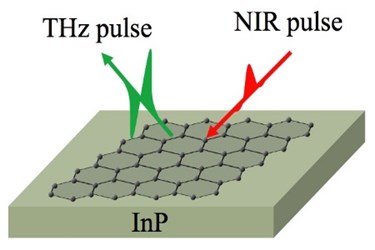New Test Reveals Purity Of Graphene

Rice, Osaka scientists use terahertz waves to spot contaminants
Graphene may be tough, but those who handle it had better be tender. The environment surrounding the atom-thick carbon material can influence its electronic performance, according to researchers at Rice and Osaka universities who have come up with a simple way to spot contaminants.
Because it’s so easy to accidently introduce impurities into graphene, labs led by physicists Junichiro Kono of Rice and Masayoshi Tonouchi of Osaka’s Institute of Laser Engineering discovered a way to detect and identify out-of-place molecules on its surface through terahertz spectroscopy.
They expect the finding to be important to manufacturers considering the use of graphene in electronic devices.
 The research was published this week by Nature’s open-access online journal Scientific Reports. It was made possible by the Rice-based NanoJapan program, through which American undergraduates conduct summer research internships in Japanese labs.
The research was published this week by Nature’s open-access online journal Scientific Reports. It was made possible by the Rice-based NanoJapan program, through which American undergraduates conduct summer research internships in Japanese labs.
Even a single molecule of a foreign substance can contaminate graphene enough to affect its electrical and optical properties, Kono said. Unfortunately (and perhaps ironically), that includes electrical contacts.
“Traditionally, in order to measure conductivity in a material, one has to attach contacts and then do electrical measurements,” said Kono, whose lab specializes in terahertz research. “But our method is contact-less.”
That’s possible because the compound indium phosphide emits terahertz waves when excited. The researchers used it as a substrate for graphene. Hitting the combined material with femtosecond pulses from a near-infrared laser prompted the indium phosphide to emit terahertz back through the graphene. Imperfections as small as a stray oxygen molecule on the graphene were picked up by a spectrometer.
“The change in the terahertz signal due to adsorption of molecules is remarkable,” Kono said. “Not just the intensity but also the waveform of emitted terahertz radiation totally and dynamically changes in response to molecular adsorption and desorption. The next step is to explore the ultimate sensitivity of this unique technique for gas sensing.”
The technique can measure both the locations of contaminating molecules and changes over time. “The laser gradually removes oxygen molecules from the graphene, changing its density, and we can see that,” Kono said.
The experiment involved growing pristine graphene via chemical vapor deposition and transferring it to an indium phosphide substrate. Laser pulses generated coherent bursts of terahertz radiation through a built-in surface electric field of the indium phosphide substrate that changed due to charge transfer between the graphene and the contaminating molecules. The terahertz wave, when visualized, reflected the change.
The experimental results are a warning for electronics manufacturers. “For any future device designs using graphene, we have to take into account the influence of the surroundings,” said Kono. Graphene in a vacuum or sandwiched between noncontaminating layers would probably be stable, but exposure to air would contaminate it, he said.
The Rice and Osaka labs are continuing to collaborate on a project to measure the terahertz conductivity of graphene on various substrates, he said.
The paper’s authors include Rice alumna Mika Tabata, who conducted research as a 2012 NanoJapan participant in the Tonouchi lab, and graduate student Minjie Wang; associate professors Iwao Kawayama and Hironaru Murakami and graduate students Yuki Sano and Khandoker Abu Salek of Osaka; and Robert Vajtai, a senior faculty fellow, and Pulickel Ajayan, the Benjamin M. and Mary Greenwood Anderson Professor in Engineering, professor of materials science and nanoengineering and of chemistry, and chair of the Department of Materials Science and NanoEngineering, both at Rice.
The National Science Foundation (NSF); the Japan Society for the Promotion of Science; the Ministry of Education, Culture, Sports, Science and Technology-Japan and the Murata Science Foundation supported the research. NanoJapan is funded by the NSF’s Partnerships for International Research and Education program.
Read the abstract at http://www.nature.com/srep/2014/140813/srep06046/full/srep06046.html
About Rice University
Located on a 300-acre forested campus in Houston, Rice University is consistently ranked among the nation’s top 20 universities by U.S. News & World Report. Rice has highly respected schools of Architecture, Business, Continuing Studies, Engineering, Humanities, Music, Natural Sciences and Social Sciences and is home to the Baker Institute for Public Policy. With 3,920 undergraduates and 2,567 graduate students, Rice’s undergraduate student-to-faculty ratio is just over 6-to-1. Its residential college system builds close-knit communities and lifelong friendships, just one reason why Rice has been ranked No. 1 for best quality of life multiple times by the Princeton Review and No. 2 for “best value” among private universities by Kiplinger’s Personal Finance. To read “What they’re saying about Rice,” go here at https://staff.rice.edu/uploadedFiles/Staff/Public_Affairs/WhatTheyreSayingAboutRice%282%29.pdf.
Source: Rice University
